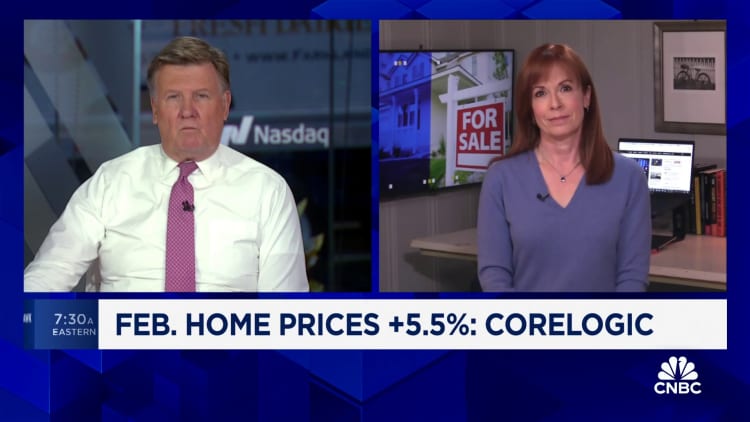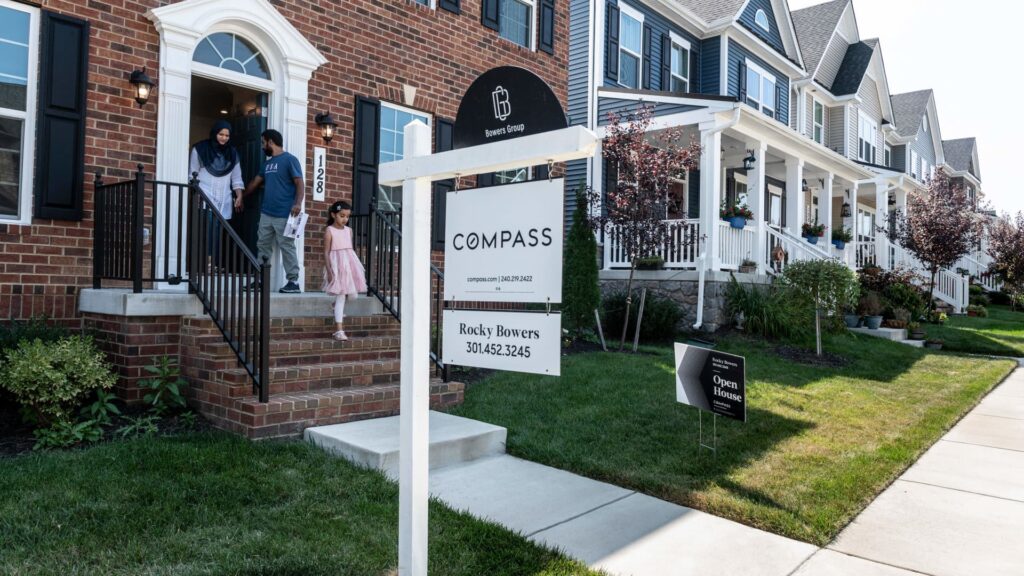
The housing market in the spring defies expectations that prices will calm down and competition will subside.
High mortgage rates usually cool prices and demand, as happened last year, but that is not the case now. There are still very few homes for sale because current homeowners cannot afford to move, causing prices to rise.
Home prices in February were 5.5% higher than they were in February of last year, according to CoreLogic. This year-over-year comparison shrinks a bit, but price rises from January to February were roughly double what they typically are at that time of year, suggesting that the market this spring started out strong despite rising interest rates.
The average interest rate on a 30-year fixed mortgage reached its highest level in October, briefly topping more than 8%. It then dropped back into the 6% range through most of December and the entire month of January. It rose again by more than 7% in February, which should have calmed the market.
But sales of newly built homes, which are accounted for by contracts signed during the month, were about 6% higher in February year over year. Pending sales of existing homes, also based on signed contracts, fell 7% that month from a year earlier, but not because of a lack of demand.
Locking effect
The real problem in the current local market is the lack of supply. There are more new listings this spring than last, but supply is still 40% lower than before the pandemic.
This is partly because current homeowners are experiencing a lock-in effect: They won't put their homes up for sale because the cost of upgrading is too high.
In the 22 years before the Fed began raising interest rates in 2022, upgrading to a 25% more expensive home would have increased a homeowner's average monthly payment of principal and interest by 40%, or about $400 per year. Average, according to data from ICE Mortgage. technology. Moving to a similar house across the street wouldn't change their payments at all.
In stark contrast today, the average homeowner with an unprecedentedly low mortgage rate would see their monthly payments rise by 132%, or roughly $1,800, in order to move to a home that is 25% more expensive. Buying the same home they live in now would increase their monthly payment by 60%, according to ICE.
These increases represent national averages and can vary from market to market. For example, moving up would add $604 to a homeowner's monthly payment in Buffalo, New York, an increase of 108%; and $4,517 in San Jose, Calif., an increase of 161%, according to ICE data.
“Lower prices would ease the calculus for many and make moves more reasonable,” said Andy Walden, vice president of institutional research at ICE. “But the net result is still too few homes for too many buyers.” “Until this fundamental mismatch is addressed, simple supply and demand will continue to put pressure on inventory and affordability.”
At what rate will the market open?
If interest rates fell to 6%, the monthly increase in payments for a 25% more expensive home would decline from an average jump of 103% to 88% – a modest but welcome improvement, according to Walden.
If prices fell to 5%, the hike would require a larger payment of 68%, which is still well above the long-term average of 39%, but perhaps enough to motivate someone with a pressing need or desire to upgrade.
While not all borrowers have record-low interest rates, more are doing so in expensive markets because the break-even point in the cost of refinancing is typically lower for borrowers with higher balances, and so they have a greater incentive to do so. They are also likely to have loans with a higher balance, so moving to a higher rate will be more expensive. That's why the shutdown's impact is strongest in most parts of California, where homes are more expensive.
The vast majority of borrowers today, 88.5%, have mortgages with interest rates below 6%, according to Redfin. Nearly 59% have rates less than 4%, and nearly 23% of homeowners have rates less than 3%.
These shares are a little lower than they were last year, because some people chose to move last year, but they show what the market is facing, especially in light of high and continuing to rise home prices.
A new report from Zillow shows that the U.S. now has a record 550 “million dollar” cities, or cities where the typical home is worth $1 million or more. That means 59 more owed $1 million than in 2023, when home values were weakening due to higher mortgage rates. a
